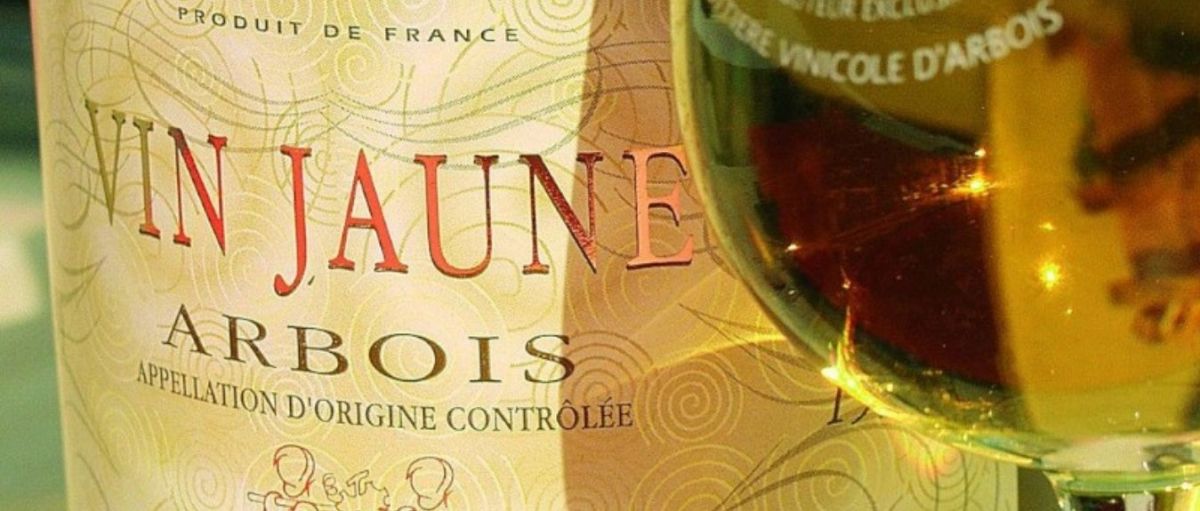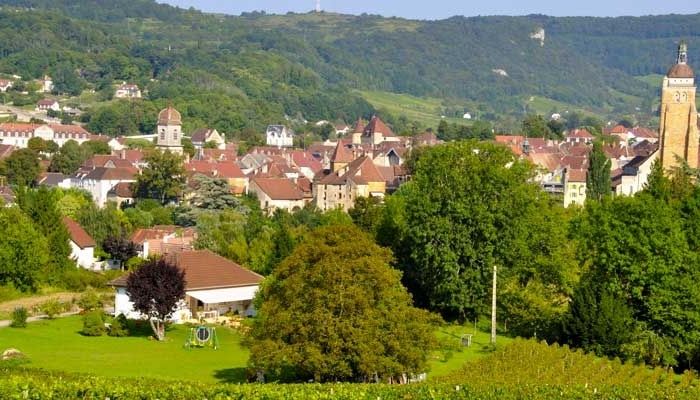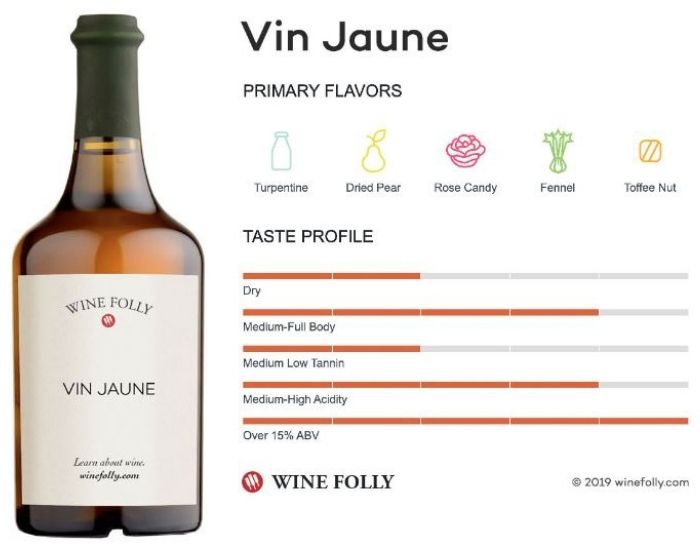Warehouse
Deadline
July 10, 2026
Judging
Date
July 27, 2026
Winners
Announced
August 12, 2026

A remarkable wine made from the Savagnin grape variety is incredibly dry and fresh with a distinct, slightly oxidized character. It's a delicious food wine, and its high acidity makes it an excellent aperitif. Vin Jaune, is a specialty wine produced exclusively in the Jura on four terroirs: Arbois, Château-Chalon, Côtes-du-Jura, and L'Étoile. It is also called a sailing wine.
Its origin is shrouded in mystery. It is said that its creation would be the result of chance, as is so often the case. Indeed, a winemaker might have forgotten about a barrel at the bottom of his cellar, only to discover a golden juice a few years later. The mythology of yellow wine was born. Its popularity stems from its distinct flavor and enigmatic elaboration technique. "Vin de Voile" ("Veil Wine") and "Vin de l'oubli" ("Forgetfulness Wine") are other names for it.

Image Source: Ideal wine, Jura Region, France
Jura is a small wine region in eastern France that produces a variety of classic and unusual wine varieties. This small wine-growing region of France is sandwiched between Burgundy and Switzerland to the west and east. The Jura Mountains' meandering topology and a panorama of wooded hillsides define it. The Jura wine area produces a wide range of wines, from traditional sparkling wines to the distinctive Vin Jaune, distinguished by yeast gauze.
Three traditional grape varietals and two more modern imports are employed in the region's wines. While the ever-versatile chardonnay makes up most of these, winemakers in Jura also plant grapes that are distinct and native to their location.
Savagnin is a tiny, pale-skinned grape that takes a long time to ripen, with harvesting lasting until early December. Semi-mountainous is the climate in which Savagnin is farmed. It is characterized by harsh winters and dry summers, with significant variation both within a season and year to year. The wines made from Savagnin are dry, slightly peppery, and have a freshness to them. This grape is mainly used to produce the traditional "vin jaune" wine.
[[relatedPurchasesItems-44]]
Savagnin grapes are harvested when they are fully mature. After alcoholic and malolactic fermentation, the wine is stored in oak barrels for six years and three months without being topped. This is what makes this wine unique.
When the wine is aged in a barrel, the wood allows for micro respiration, which causes some of the wine to evaporate, referred to as the "Angel's Share." In most instances, the winemaker compensates for this loss by adding wine (a process known as "topping") to keep the wine from oxidizing. In addition, contact with the air is intentionally sought during the creation of yellow wine so that a layer of yeast can form and give it its distinct flavor and fragrances. Next, it goes through a unique maturing process that involves a yeast film called the voile, or veil. Then, it's held in oak barrels for at least six years and three months after fermentation, with no interference from the winemaker. This yeast works slowly to create the well-known 'yellow taste,' which includes complex flavors of walnuts, hazelnuts, almonds, and spices. After barrel aging, the nectar is bottled in a custom-made clavelin with 620 ml (the remainder of the original liter).
It has a powerful aromatic strength, with fresh nuts, dried fruit, and floral delicacy notes. This wine knows how to be strong and rich in the mouth. This wine's balanced structure exposes apple and spices in addition to the previously mentioned aromas. It's recommended to serve your yellow wine at 15 to 16°C to get the most out of it.
Louis Pasteur, a Jura native who discovered yeasts, studied the process of generating yellow wine. In 1866, his findings were published in "Studies in Wine." Although many secrets remain unsolved, he was one of the first to recognize the link between the yeast veil on the surface and the ability of a wine to resist turning vinegar.

Image Source: Wine folly
The Jura has a solid yellow wine tradition. Since 1996, over 40,000 wine lovers have gathered to celebrate the "Percée du Vin Jaune" during the first weekend of February. It's a celebration of the first barrels of wine being tapped after six years and three months of maturing. Parades, ceremonies, meetings, domain tours, a sommelier competition, and many other things are on the schedule for these celebrations.
Each of the yellow wine-producing villages takes turns organizing this event every year.
It is both an aperitif wine and a wine that can accompany a meal in food and wine pairing. It's a unique wine that doesn't go well with anything. The food pairings for this wine must be precise and well thought out. It pairs well with foie gras, seafood, and fowl in a cream sauce. Yellow wine also pairs nicely with cheeses from the region, such as ripened comté, morbier, and mont d'or. It's also often employed in cuisine, particularly in preparing Franc-Comtois dishes such as coq au vin jaune or trout in yellow wine.
Here are a few Vin jaune wines you can try:
Vin Jaune 2014, Arbois, Jean-Louis and Valérie Tissot
Vin Jaune 2012, Arbois, Domaine Rolet Père & Fils
Château-Chalon 2014, Domaine Jean-Luc Mouillard
Vin Jaune 2014, Etoile, Domaine Philippe Vandelle
Vin Jaune 2013, Domaine Pecheur, Côte du Jura
Article by Aakriti Rawat, Beverage Trade Network
Header Image Source: Beaux-vins, Vin Jaune Arbois
Grow your wines in the off-premise channels of the USA. The Early Bird submission deadline is February 20, 2026, and the domestic submission deadline is June 30, 2026. Here is how to enter.